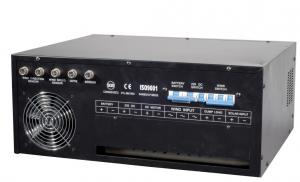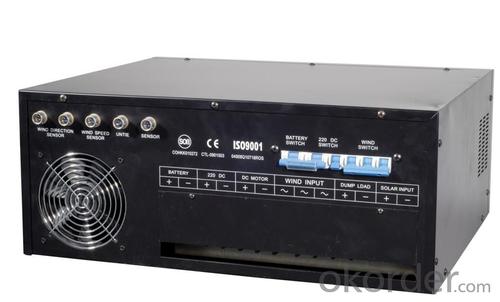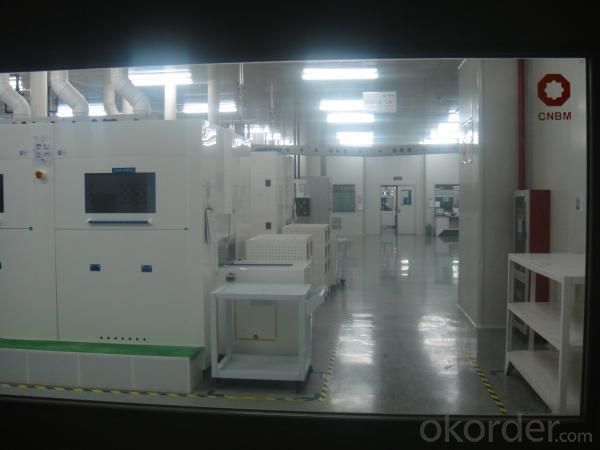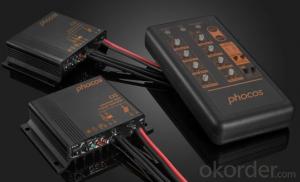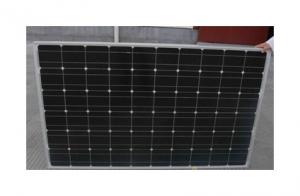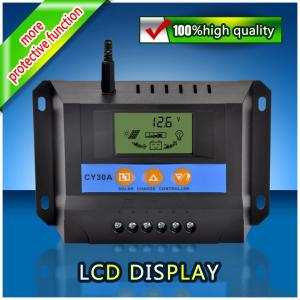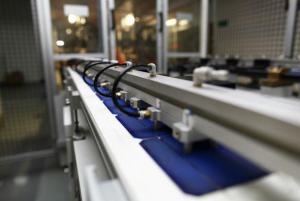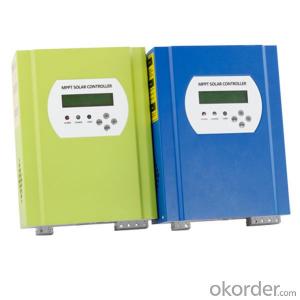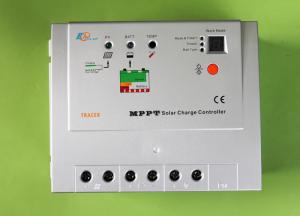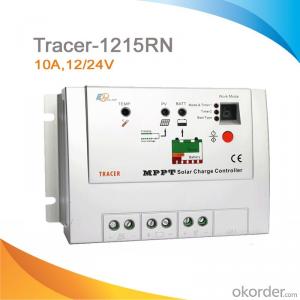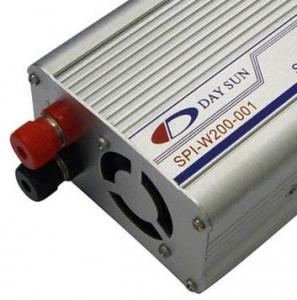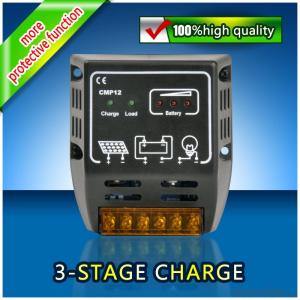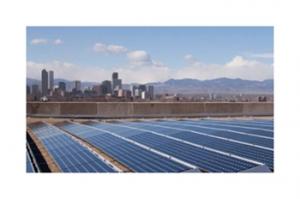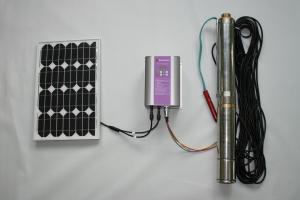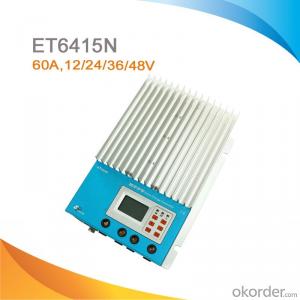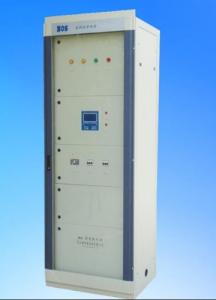Zale Solar Charge Controllers - High Quality Solar Controller Tracer-4210RN
- Loading Port:
- China Main Port
- Payment Terms:
- TT
- Min Order Qty:
- 1 unit unit
- Supply Capability:
- 1000 units per month unit/month
OKorder Service Pledge
OKorder Financial Service
You Might Also Like
Introduction of High Quality Solar Controller Tracer-4210RN
Tracer-4210RN solar controller is our new generation controller for off-grid solar system, such as street light, solar home system or small power station etc.Tracer-4210RN has LCD display, reliable battery charging, full electronic protection, programmable parameters and other features and powerful function.
Our factory is highly recognized by its business partners and clients all over the world and has obtained rapid development under the spirit of win-win .With Solar Controller Tracer-4210RN,We will carry on the mutual beneficial,innovative and revolutionary trading structure as we did before,create value for our employees,share holders and clients and benefit the whole society in our future development.Please contact us ,if you have interest in Solar Controller Tracer-4210RN,don’t hesitate!
Features of High Quality Solar Controller Tracer-4210RN
·MPPT technology
·Peak conversion efficiency of 97%
·High Tracking efficiency of 99%
·Several seconds tracking speed
·4-Stage charge with PWM output
·Nature convection cooling
·Full power output in ambient temperature up to 45 ℃
·Temperature compensation
·Sealed, Gel and Flooded battery option
·Widely used, automatically recognize day/night
·Diversified load control
·RJ45 interface &optional meter
·2 years warranty
·CE certificate
Electronic Protections of High Quality Solar Controller Tracer-4210RN
·Overheating
·Over discharging
·Over charging
·Load overload
·Load short circuit
·PV reverse polarity
·Battery reverse polarity
Data Sheet of High Quality Solar Controller Tracer-4210RN | |
Model | Tracer-4210RN |
Rated system voltage | 12/24V auto work |
Rated battery current | 40A |
Rated load current | 20A |
Max.battery voltage | 32V |
Max.PV open circuit voltage | 100VDC |
Max.PV input power | 12V 520W;24V 10400W |
Self-consumption | <10mA(24V) |
Charge Circuit Voltage | <=0.26V |
Discharge Circuit Voltage Drop | <=0.15V |
Communication | TTL232/8 pin RJ45 |
Temp/compensation | -30mV/℃/12V(25℃) |
Working temperature | -35℃~+55℃ |
Storage temperature range | -35℃~+80℃ |
Humidity | 10%-90% NC |
Enclosure | IP 30 |
Altitude | <=3000m |
Dimension | 242mm *169 mm *91mm |
Mounting holes | 180mm *160 mm |
Mounting hole size | Φ5 |
Weight | 2.05kg |
Factory Picture of High Quality Solar Controller Tracer-4210RN
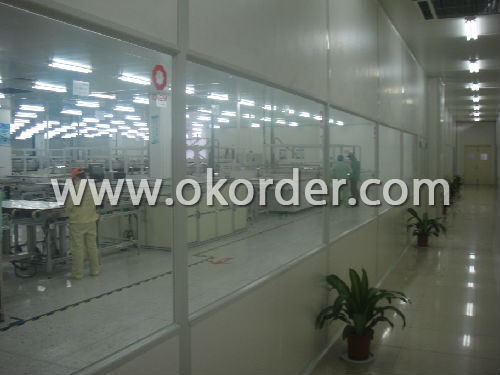
Package Picture of High Quality Solar Controller Tracer-4210RN
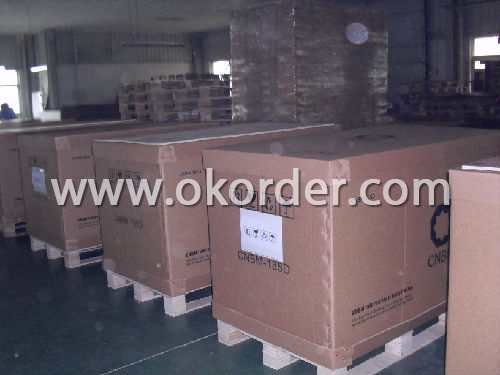
- Q: How does a solar controller handle load control and diversion charging?
- Load control and diversion charging are managed by a solar controller, which utilizes its built-in features and capabilities. To control the load, the controller offers multiple load terminals or outputs that can be connected to various electrical loads. This allows the controller to regulate the power flow and manage the energy consumption of each load, preventing system overload and ensuring efficient use of solar power. On the other hand, diversion charging involves redirecting surplus energy generated by the solar panels to charge additional devices or batteries. This is achieved by connecting a diversion load, such as a dump load or secondary battery bank, to the solar controller. When the connected loads require less energy than what is being produced, the excess power is diverted to the diversion load, preventing overcharging of batteries and maximizing solar energy utilization. Sophisticated algorithms and monitoring systems are commonly employed by solar controllers to determine when to activate load control or diversion charging. These algorithms take factors like battery voltage, solar panel output, and load requirements into consideration to make intelligent decisions regarding power distribution and diversion. Some controllers even utilize advanced MPPT technology to optimize solar panel output and ensure efficient power conversion. In conclusion, a solar controller effectively manages load control and diversion charging by providing multiple load terminals for power distribution and redirecting excess energy to a diversion load. It utilizes algorithms and monitoring systems to make intelligent decisions and optimize the utilization of solar energy.
- Q: What are the safety features of a solar controller?
- The safety features of a solar controller typically include overcharge protection, short-circuit protection, reverse current protection, and over-discharge protection. These features ensure that the solar controller can effectively regulate the charging and discharging of batteries in a solar system, preventing any potential damage or hazards.
- Q: Can a solar controller be used with a solar-powered commercial building?
- Yes, a solar controller can be used with a solar-powered commercial building. A solar controller helps regulate and optimize the charging and discharging of batteries in a solar power system. It ensures that the energy generated by the solar panels is efficiently stored and managed, allowing for reliable and consistent power supply to the building.
- Q: Can a solar controller be used in a mobile solar power system, such as an RV or boat?
- Certainly, a solar controller can be utilized in a mobile solar power system such as an RV or boat. In fact, it is highly advisable to incorporate a solar controller in such systems to guarantee the effective and secure charging of the batteries. A solar controller, alternatively referred to as a charge controller, is engineered to regulate the transmission of solar energy from the solar panels to the batteries. Its primary objective is to prevent battery overcharging and over-discharging, as these can result in damage and reduce their lifespan. In a mobile solar power system like an RV or boat, where the solar panels are exposed to varying sunlight conditions and the batteries are consistently being charged and used, the significance of a solar controller becomes even more pronounced. It aids in optimizing the charging process by adjusting the voltage and current to align with the battery's requirements, thus maximizing the charging efficiency. Moreover, a solar controller of good quality will also incorporate additional features like temperature compensation and load control. Temperature compensation guarantees that the charging parameters are adjusted based on the surrounding temperature, thereby preventing any potential harm to the batteries. Load control enables the connection of supplementary loads to the system, such as lights or appliances, and ensures that they are directly powered by the solar panels without depleting the batteries. To summarize, a solar controller is an indispensable component in a mobile solar power system like an RV or boat. It plays a vital role in regulating the charging process, safeguarding the batteries, and optimizing the utilization of solar energy.
- Q: What is the typical response time of a solar controller in adjusting the charging parameters?
- The response time of a solar controller in adjusting charging parameters can vary based on factors such as the controller model, design, and charging system complexity. However, modern solar controllers generally have quick response times, typically ranging from milliseconds to seconds. Solar controllers continuously monitor the solar panel's output and battery's charge level, making adjustments as needed. When the solar panel produces more power than the battery can handle, the controller must respond promptly to prevent overcharging and battery damage. Maintaining optimal charging parameters relies on the solar controller's ability to accurately detect changes in panel output and battery conditions. This ensures efficient and safe charging, maximizing the battery's lifespan and performance. Several factors influence the response time, including the controller's sensing and control circuitry, component quality, and overall design. Advanced controllers with improved technology and control algorithms tend to have faster response times. It's worth noting that manufacturers often provide specific response time information in the technical specifications of their solar controllers. For accurate and detailed information on the response time of a particular model, it is recommended to consult these specifications or contact the manufacturer directly.
- Q: How does a solar controller handle shading or partial obstruction of solar panels?
- The use of Maximum Power Point Tracking (MPPT) technology allows a solar controller to effectively manage shading or partial obstruction of solar panels. MPPT constantly adjusts the voltage and current of the panel to maintain optimal performance. When a solar panel is partially shaded or obstructed, less sunlight reaches the panel, resulting in decreased power generation. This can have a significant impact on the overall efficiency of the solar system. However, a solar controller equipped with MPPT capability can minimize these effects and ensure the highest power output. MPPT-enabled solar controllers utilize advanced algorithms and circuitry to continuously monitor the voltage and current of the panel. By actively tracking the panel's maximum power point, the controller optimizes operating conditions to maximize power output, even in the presence of shading or obstruction. When shading occurs, the MPPT controller detects changes in voltage and current and adjusts the operating point accordingly. It dynamically identifies the new maximum power point and maintains the panel's output at or close to its optimal level, compensating for the shaded areas. This allows the system to extract the maximum amount of energy from available sunlight, ensuring high efficiency and power generation. Furthermore, advanced MPPT controllers may employ partial shading algorithms that can identify specific shaded areas on the panel and allocate power generation resources accordingly. These algorithms may reconfigure the panel's connection or adjust its electrical characteristics to bypass shaded areas, further optimizing power output. In conclusion, a solar controller with MPPT capability effectively manages shading or partial obstruction of solar panels by continuously adjusting operating conditions to maximize power output. This ensures that the solar system generates the highest possible energy, even in less-than-ideal conditions.
- Q: What are the indicators and display features typically found on a solar controller?
- Solar controllers, also known as charge controllers, are essential components in solar power systems that ensure efficient charging and protection of batteries from overcharging or discharging. These controllers are equipped with various indicators and display features that provide crucial information about the system's performance. One common indicator found on solar controllers is the battery status indicator. This indicator shows the current state of charge of the battery, usually represented by a series of LED lights or a voltage reading. It allows users to quickly assess the battery's capacity and determine if it requires charging or if it is fully charged. Another important indicator is the solar input indicator, which displays the amount of solar power being generated by the photovoltaic (PV) panels. This indicator can be presented in Watts or Amps, giving users a real-time understanding of the system's energy production. By monitoring this indicator, users can assess the system's efficiency and identify any potential issues, such as shading or malfunctioning panels. Some solar controllers also feature load or output indicators, which show the amount of power being drawn from the battery to power connected loads. This indicator is particularly useful in off-grid systems, allowing users to manage their energy consumption and prevent overloading the battery. Additionally, many solar controllers are equipped with a digital or analog display that provides detailed information about the system's performance. This display often includes parameters such as battery voltage, charging current, load current, and ambient temperature. These readings enable users to have a comprehensive overview of the system's operation and make informed decisions regarding energy usage and maintenance. Furthermore, advanced solar controllers may include additional display features such as data logging capabilities or communication interfaces. Data logging allows users to analyze historical data and track trends in energy production and consumption, aiding in system optimization. Communication interfaces, such as USB or RS485 ports, enable the controller to connect to external devices or monitoring systems for remote monitoring and control. In summary, the indicators and display features typically found on a solar controller include battery status indicators, solar input indicators, load or output indicators, as well as digital or analog displays showing various system parameters. These features provide users with essential information to monitor and manage their solar power systems effectively.
- Q: How does a solar controller prevent damage from power fluctuations?
- A solar controller prevents damage from power fluctuations by regulating and stabilizing the incoming solar power to match the requirements of the connected devices or batteries. It acts as a barrier between the solar panels and the load, ensuring that the voltage and current remain within safe limits and preventing any damage caused by sudden voltage spikes or drops.
- Q: Can a solar controller be used with a grid-tied solar system?
- No, a solar controller is not typically used with a grid-tied solar system. Grid-tied systems are designed to directly connect to the electrical grid, allowing excess energy to be fed back into the grid. Solar controllers, on the other hand, are commonly used in off-grid systems to regulate and optimize the charging of batteries.
- Q: How does a solar controller prevent damage to batteries?
- A solar controller prevents damage to batteries by regulating the charging process. It monitors the battery voltage and adjusts the charging current accordingly, preventing overcharging and over-discharging. Additionally, it protects the batteries from short circuits and reverse current flow, ensuring their longevity and optimal performance.
1. Manufacturer Overview
| Location | Shenzhen,China |
| Year Established | 2009 |
| Annual Output Value | Above US$12 Million |
| Main Markets | Europe;North America;Afirca |
| Company Certifications | ISO 9001:2008;CQC;CE |
2. Manufacturer Certificates
| a) Certification Name | |
| Range | |
| Reference | |
| Validity Period |
3. Manufacturer Capability
| a) Trade Capacity | |
| Nearest Port | Shenzhen,China |
| Export Percentage | 0.6 |
| No.of Employees in Trade Department | 46 People |
| Language Spoken: | English;Chinese;Spanish |
| b) Factory Information | |
| Factory Size: | Above 300,00 square meters |
| No. of Production Lines | Above 4 |
| Contract Manufacturing | OEM Service Offered;Design Service Offered |
| Product Price Range | Average |
Send your message to us
Zale Solar Charge Controllers - High Quality Solar Controller Tracer-4210RN
- Loading Port:
- China Main Port
- Payment Terms:
- TT
- Min Order Qty:
- 1 unit unit
- Supply Capability:
- 1000 units per month unit/month
OKorder Service Pledge
OKorder Financial Service
Similar products
Hot products
Hot Searches
Related keywords
